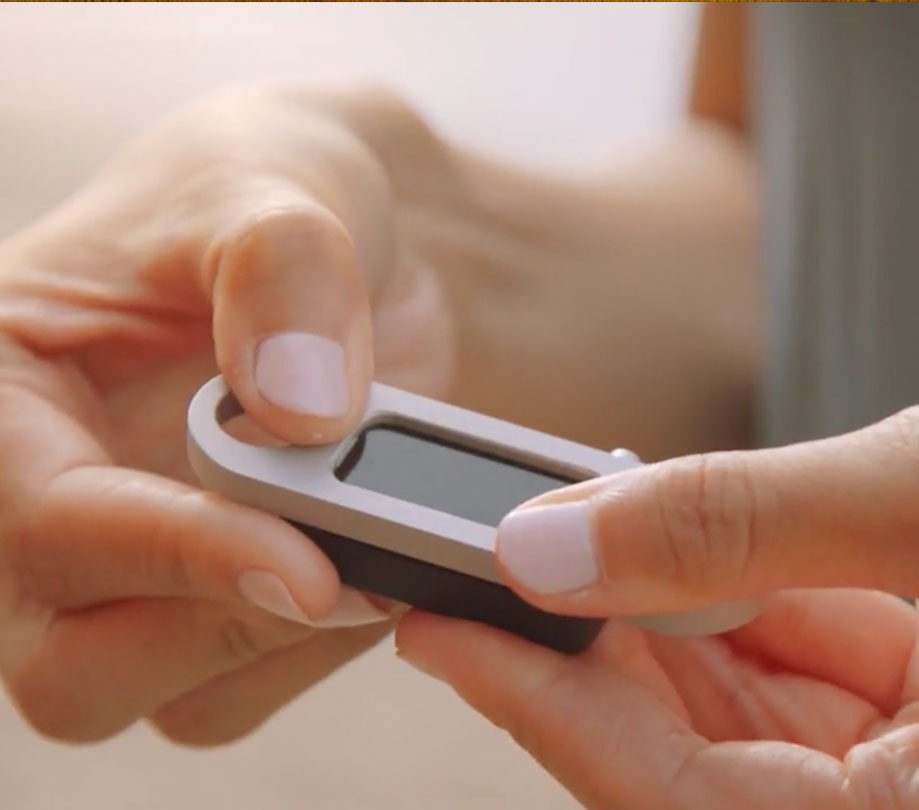How Pycom wants to help IoT developers
Tuesday, December 4, 2018

|
Richard Harris |
Fred de Haro from Pycom talks about the evolution of IoT development and how his company is helping developers bring their products to the market faster.
Although IoT development is increasingly on the rise, challenges still exist in the development and manufacturing process that prevents a streamlined workflow for developers.
In this interview, Fred de Haro, CEO, and co-founder at Pycom discusses the company’s new consumer-focused developer offering, and shares insight into the current challenges developers are facing in terms of bringing IoT projects to market.
We sat down with Fred de Haro to discuss the history of Pycom, and why his company is now entering the consumer market to remove existing barriers for developers and make life easier consumers.
ADM: How has the market for IoT development evolved over the past few years? What are the challenges developers face?
Haro: IoT markets are predicted to grow astronomically, so it comes as no surprise that the IoT industry is now a melting pot for telecommunications, consumer electronics, and industrial solutions.
There are around 22 million developers in the world and the demand for skills and building blocks in every part of the IoT stack is high.
Recognizing that every IoT project starts with 1 product (as opposed to millions of units), hardware vendors over the last few years have become more attuned to helping developers get up and running with their small volume proof of concepts. They have converted to supporting the ‘long tail’ business prospects related to development starting with smaller sales volumes (develop, test and develop some more) prior to final integration.
Developers still face challenges in many aspects of IoT development. Embedded development and integration results in lengthy development cycles. There is also an increasing demand, and therefore competition, for low-cost hardware and devices, which adds increased pressure on embedded teams.
It should also be noted that the electronics industry is changing. Increasing demand and margin pressures mean that component manufacturers are increasingly adopting just-to-order manufacturing, resulting in less freely available surplus components for small quantity production, as would be the case for proof of concept and pilot volumes. The pressure on lead times is also very high with some components requiring as much as a year to materialize and we’ve heard of even worse.
In addition, many developers who aim to use cellular networks still struggle to obtain low quantities of SIM cards and subscriptions, and when they are ready to deploy, they can still find that new LTE-M networks are slow to roll out leaving them with patchy coverage.
At Pycom, we power over 240,000 developers to help them move from idea to production with their projects in less than 3 months. We provide our developers with a comprehensive range of development boards, expansion boards, sensor shields and OEM hardware spanning a combination of five different networks including WiFi, Bluetooth, LoRa, Sigfox, and LTE CAT M1 / NB1. By offering the combination of hardware and five different network capabilities, Pycom developers can build IoT projects that will work in any situation.
ADM: What is Pylife and how does it differ from Pycom?
Haro: Pycom’s IoT portfolio for developers is a suite of embedded multi-network development hardware, accessories and supporting software. It is widely used by developers who are creating both small and large projects across 83 countries.
Pylife is a consumer-driven amalgamation of Pycom’s technology, while also being well-suited for use by developers to speed up the delivery of new connected ideas and applications. Consumers can use the Pylife digital dashboard along with one or more PyGo wearables to stay connected to their loved ones, even where there’s no cellular service. Consumers of connected tech have needed a simple and consolidated solution to manage their busy connected life. The Pylife/PyGo combination provides the reliable connectivity and versatility to use the wearables for different purposes and track it all in one place.
ADM: Who is the target audience for Pylife?
Haro: Everyone. Pylife can be used by any person wanting to connect people, pets and things around them. The most obvious target audience includes outdoor leisure teams and communities, dog owners, parents, and children. The Pylife app and PyGo devices communicate with each other using well-known networks: WiFi, BLE, LTE-M Cellular (CAT M1 and NB-IoT) and LPWAN technologies such as LoRa. Additionally, with amazing mesh technology, users stay connected where there’s no internet connection or even a cellular signal. PyGos within a 12-kilometer range of each other create their own private mesh network or can opt to expand and strengthen their network by opening it up to other anonymous PyGos in the area. This ability to stay truly connected makes Pylife ideal for a wide target audience, probably for use cases, we haven’t imagined yet.
ADM: What opportunities / benefits does this technology provide to developers?
Haro: Regulatory certification and network certification can be lengthy and cost hundreds of thousands of dollars. Given that the PyGo hardware is a closed module and comes pre-certified, developers have a ready-to-use product that they can program and use in customer applications within a week.
PyGos integration of at least 4 networks in one small module is complex to deliver, and gives users much better connectivity to a network, even in remote areas. Developers will benefit from the fact that the network piece of their IoT application has been taken care of.
Developers will have great flexibility in how they use their PyGos and the mobile app. All APIs are going to be open, and we will release details that will enable each developer to 3D print their own enclosures, or accessories.
It’s about giving users better odds of being connected.
The Pylife App will have room for new applets which means developers can contribute to the experience. Pycom Applets will be free, allowing developers to participate in, and even enable new revenue streams.
In addition, the Pylife App can also be white labeled so that developers and SMEs can use it for their own IoT Applications.
ADM: Is this being done by your competitors? If so, how are you doing it differently?
Haro: While there are already loads of great connected consumer products on the market today, we’re unique in delivering the combination of multi-network features, communications channels as well as re-purpose abilities that are presented in the PyGos and with Pylife.
ADM: What is your vision for this product and how does it intertwine with developer participation?
Haro: We want to create a global mesh network that connects people to their loved ones and things. The intention is for Pylife to be in an inclusive, open ecosystem, where developers are able to contribute new accessories, different form factors, and applets to suit a growing number of new IoT applications. Everyone benefits.
ADM: How many developers make up the Pycom ecosystem?
Haro: Pycom has a thriving community of over 240k developers across the world and is continuing to expand.
ADM: What are a few interesting use cases you hope developers create for Pylife consumer use?
Haro: We hope to see many cases of varied usage for Pylife. We have anticipated that there are early adopters in such areas as music festival management, elderly care in hospitals, and horse-riding professionals.
The possibilities are endless, and Pycom has already been approached by companies wanting to use the PyGos for industrial IoT applications and shipping applications.
We are looking to the developer community to use their creativity to create new and unique use cases that will help connect people and things in various scenarios.
ADM: What do developers like about Pycom and Pylife the most?
Haro: Pycom is known for its open source firmware which developers have been enjoying for a number of years now. In addition, Pycom’s products share the same firmware architecture, which makes it easy for developers to swap between development boards. Developers also have an easy route to the early manufacturing of small volume batches.
The early feedback of the Kickstarter Preview received during conversations and at events has been overwhelmingly positive. We have lots of excited community members who, according to their own words, are “itching” to get their hands on the PyGos.
- The PyGo will contain the world’s first FiPy OEM module - a 5-network capable module, which is MicroPython programmable and in a very small form factor.
- It is the first product that delivers a LoRa Mesh Network that can be extended from one cluster to other LoRa meshes via backhaul.
- It is also the only current IoT proposition that easily lends itself to being repurposed.
ADM: What is the genesis story behind Pycom and Pylife?
Haro: Pycom was set up because Bettina - Pycom co-founder - and I knew there was a better way of doing IoT. We set out to create an ecosystem for all connectable things that removed barriers and reduced time to market - making life a lot easier for developers.
Pylife is the natural progression from the Pycom developer portfolio. It’s an amalgamation of three years of R&D at Pycom. It combines everything we aspire to deliver in technology: reliable connections through many radios, smart sensors such as Accelerometers and GPS, ease of use and style. All of this helps people stay connected. The idea behind the software is to create a single mobile app that acts as a central point between the social interaction and sharing of life and things. We’ve always had the ambition of building global communities. Pylife enables this.
About Fred de Haro
Fred de Haro is the CEO and co-founder of Pycom, a global IoT company that has pioneered an innovative IoT platform that helps developers move from idea to market in less than three months. At Pycom he brings a culture of high performance and high integrity. Passionate about Start-ups and new technologies, Fred has spent many years building pre-IPO businesses and helping them secure high growth whilst remaining true to their original DNA. He is passionate about customers, team spirit and innovation.
Read more: https://pycom.io/

Become a subscriber of App Developer Magazine for just $5.99 a month and take advantage of all these perks.
MEMBERS GET ACCESS TO
- - Exclusive content from leaders in the industry
- - Q&A articles from industry leaders
- - Tips and tricks from the most successful developers weekly
- - Monthly issues, including all 90+ back-issues since 2012
- - Event discounts and early-bird signups
- - Gain insight from top achievers in the app store
- - Learn what tools to use, what SDK's to use, and more
Subscribe here

_r2f0ox12.jpg&width=800)









_7xsmrrta.jpg)
